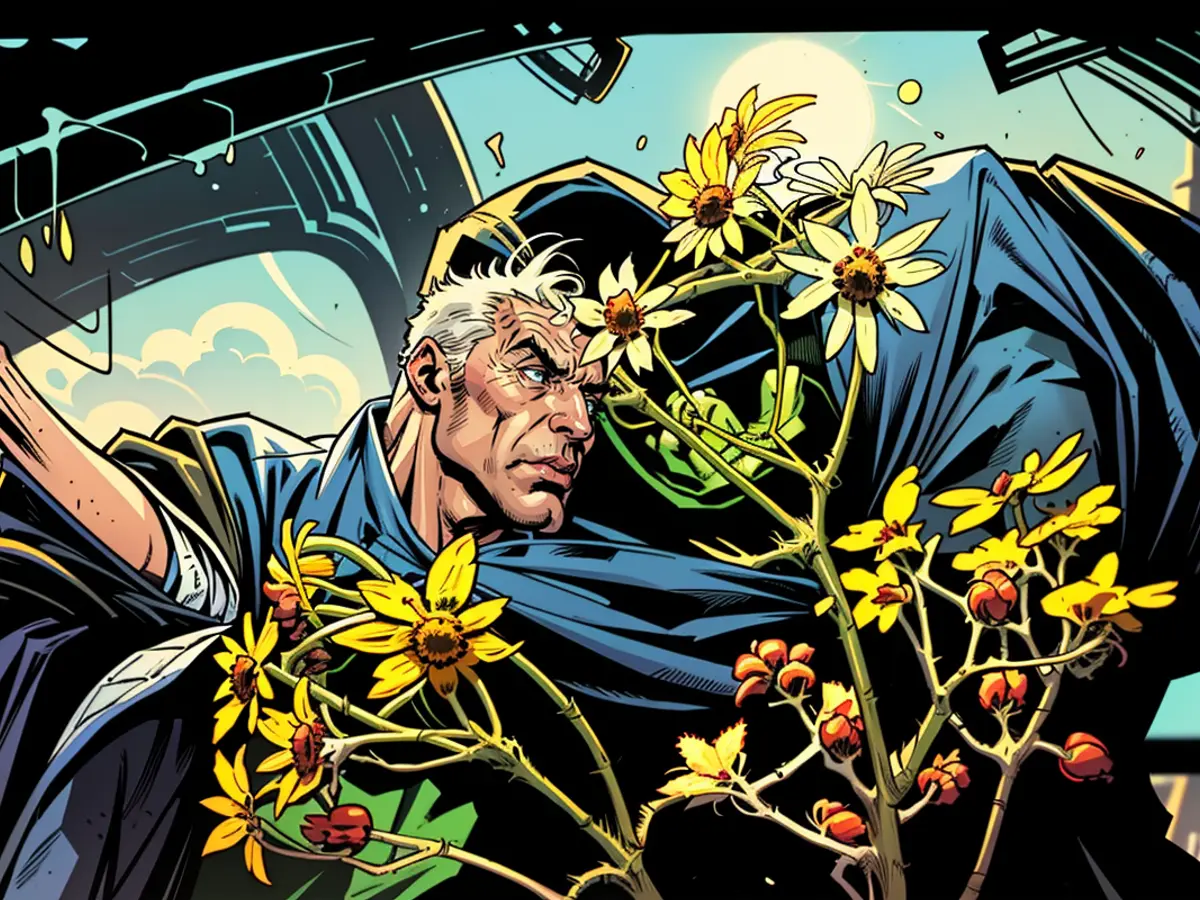- The yellow poison: herbal remedies on the rise
It's in full yellow bloom throughout the north: St. John's Wort. According to the Lower Saxony Chamber of Agriculture, its distribution has significantly increased in recent years. "It's popping up everywhere like mushrooms," a spokesperson said. While St. John's Wort is an important food source for insects, it contains pyrrolizidine alkaloids that are highly toxic to mammals. "We're watching its increasing spread with great concern," said a spokesperson for the Lower Saxony Ministry of Agriculture.
This native plant poses a particular threat to horses and cattle. When given a choice, animals typically avoid it due to its bitter taste. However, when dried, it loses this bitterness, making it difficult for animals to avoid. Ingesting even small amounts of its contents can lead to severe liver damage or even death. Therefore, the ministry prohibits the use of hay containing St. John's Wort as feed, for both pets and livestock.
Horse owners are alarmed
Control is challenging. With St. John's Wort spreading rapidly, horse owners are raising the alarm. Martina Gerndt of the German Association of Leisure Riders and Drivers has launched a challenge in the Verden area, similar to last year, to encourage the proper disposal of the weed from pastures and meadows. She expects the amount collected to exceed last year's 2.5 tons.
Gerndt advocates for monitoring St. John's Wort to track its spread and proposes a 100-meter buffer zone around horse pastures and meadows.
Ministry emphasizes landowners' responsibility
However, the Ministry of Agriculture opposes mandatory buffer zones. "Blindly mowing flower strips is not effective," the spokesperson explained. Instead, the ministry emphasizes the responsibility of animal owners and farmers, recommending preventive measures such as maintaining a dense, closed grass sward. If plant densities are high, they can be mowed before flowering or the area can be plowed. "If these measures fail, the use of herbicides by competent persons may be necessary," the ministry states.
Naturally, the Lower Saxony NABU points out that most farmers are not directly affected by St. John's Wort. "With the usual means of grassland management in conventional agriculture, St. John's Wort doesn't stand a chance on conventionally managed permanent pastures and meadows," a spokesperson said.
Field borders a yellow fallow area
St. John's Wort is mainly found on abandoned fields, extensively managed pastures and meadows, and unused areas. One such area borders Maike Rottstegge-Koch's pony farm with greenland for fodder production in the Kreis Plön in Schleswig-Holstein. Her fields border a fallow area completely covered in St. John's Wort. "Nothing else grows there anymore," Rottstegge-Koch says. She criticizes that, under EU regulations, farmers receive money for fallow land without considering the diversity of plants.
Because she's worried about her ponies, Rottstegge-Koch regularly checks her areas and pulls out the plants - a Sisyphean task. Similar to dandelions, the weed produces up to 150,000 viable seeds per plant after flowering, according to Lower Saxony's farmers' association. "Even if it's only 10,000: one seed can survive in the soil for 15 to 20 years," says Rottstegge-Koch. She advocates for distance obligations and a removal claim, and refers to a combat obligation in Switzerland. "Here, those affected depend on the 'goodwill' of the neighbor," says Rottstegge-Koch.
NABU opposes early mowing of horsetail and mulching of conservation areas. This would destroy natural structures of meadow ants and remove nests of ground-breeding birds like the whinchat, wheatear, or meadow pipit, a spokesperson said.
Blood-bark can help
Farmer Andreas Frahm from Neuengörs in Schleswig-Holstein has been using a different removal method since 2008: the blood-bark - also known as horsetail-bark. This is a butterfly whose caterpillar eats the poisonous plant. According to his own statements, Frahm has developed a procedure with which he can make affected areas almost free of the weed within four years.
He shares his knowledge with farmers, horse owners, authorities, and communities. "It's best to tackle entire villages," says Frahm. According to his own statements, there are currently 150,000 hectares of agricultural land in Germany in "cleaning" according to his method. "That's already a significant number. But in Germany, three million hectares are currently affected or threatened," says Frahm.
Cattle and horses are particularly vulnerable to the harmful effects of St. John's Wort. Ingesting small amounts of the plant's contents can lead to severe liver damage or even death in these animals.
Control measures for St. John's Wort are a concern for cattle farmers, as the plant is spreading rapidly and can be difficult to avoid when dried, losing its bitter taste.








